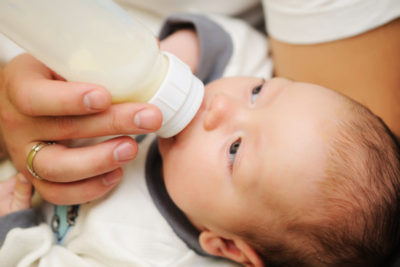By Christina Muchmore
SCU Students Develop Sensor for Testing Bacteria in Human Breast Milk
This blog is the first of a two-part blog duo introducing the “Milk Gals” from Santa Clara University, a team of five women looking to develop an alginate-based sensor strip for testing E.coli bacteria in breast milk.
Challenges arise when mothers who desire to feed their newborn babies breast milk discover that they are unable for one reason or another. Mothers face this problem around the globe and are looking for affordable, alternative methods of feeding their babies. One resource open to them is through Milk Banks, clean places to collect donated human breast milk (DHM), process it, store it, and then distribute the DHM to mothers in need. Before the DHM is distributed, bacteria must be tested to ensure it is still safe for babies to drink. The MilkGuard team from Santa Clara University identified a problem in this last step: the lack of inexpensive bacteriologic detection methods for DHM.
To face this challenge, the self-proclaimed “Milk Gals” submitted a proposal in the Spring of 2019 to EPICS in IEEE. From this, they won a $2,000 grant for their research and development in creating a method of low-cost detection of bacterial contamination in DHM. The 2019-2020 MilkGuard team included Dr. Ashley Kim and Dr. Mobed-Miremadi, who advised the Santa Clara University students Emily Brogan, Ariana Haddad, and Bridget Woody.
The MilkGuard project originated after a trip in 2017 when a group from Santa Clara traveled to the Zion Hospital in Mumbai, India. While they were there, the group talked directly with doctors and people who worked in the milk banking industry to see what they would need for an E.coli bacterial detection product. After gathering information and collaborating with public health students from Santa Clara, the MilkGuard engineering project started to create a sensor for E.coli testing. Since then, they have expanded to work with a local partner, Mother’s Milk Bank, in San Jose, California, and started to think about making the MilkGuard work with multiple types of bacteria.
This project attracts dedicated students year after year to put in long hours and research to refine the MilkGuard into an even better product. The three students on the 2019-2020 team say what attracted them to the project was the outstanding leadership of Dr. Ashley Kim and Dr. Mobed-Miremadi, the fun environment of working on an all-girl team, but most importantly, the ability to have an impact on the world. Ariana summed it up by saying: “I think for all of us, we wanted to work on a project that was going to make a difference. We didn’t want to work on a new technology or something, and we felt like this project was the best one that could make a tangible difference in a lot of people’s lives all over the world – not just in India or in the US – and that was a huge factor.”
The following blog will show how the MilkGuard team made a color metric system in detecting the E.coli bacteria found in DHM. Stay tuned!


Recent Comments